Complete Solutions to CONCEPT APPLICATION (LEVEL 2) of chapter LIGHT of Class 7 book with complete answers and questions
| Class 7 | PHYSICS |
| Chapter | LIGHT |
| PEARSON IIT JEE FOUNDATION | CONCEPT APPLICATION (LEVEL 2) |
| Number Of Questions | 29 |
| Academic Year | 2023-24 |
The light rays from a point object placed at the focus of a concave mirror, after reflection
01:57View SolutionAn objcet is placed between two mirrors which make an angle of `45^(@)` with each other, then the number of images formed are _____.
02:00View SolutionA light ray from an object 'P' is reflected from a mirror as shown in the figure, then
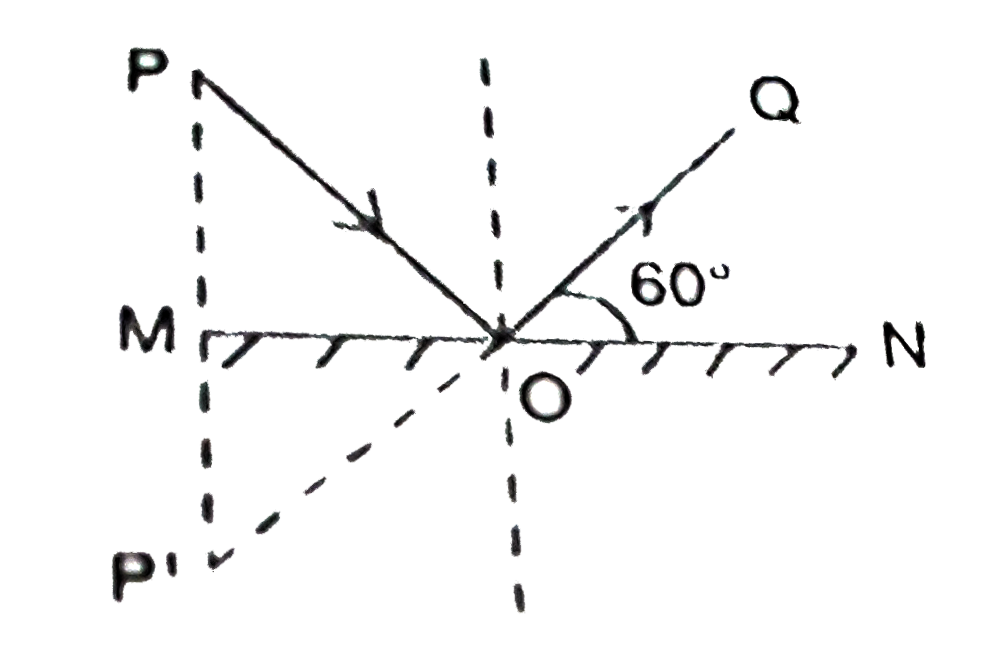 02:37View Solution
02:37View SolutionChoose the correct statement(s) from the following.
02:28View SolutionThe number of image of an object placed between two plane parallel mirrors is _____
02:15View SolutionThe image distance of an object which is placed at an infinite distance is equal to
02:51View SolutionRead the following statements and choose the correct option.
(A) The angle made by the incident light ray with the plane of mirror is equal to the angle made by the reflected light ray with the plane of mirror.
(B) The angle between an incident light ray and a reflected light ray is twice that of the angle between the incident light ray and normal.03:15View SolutionIf a light ray is reflected from a mirror as shown in the figure, then
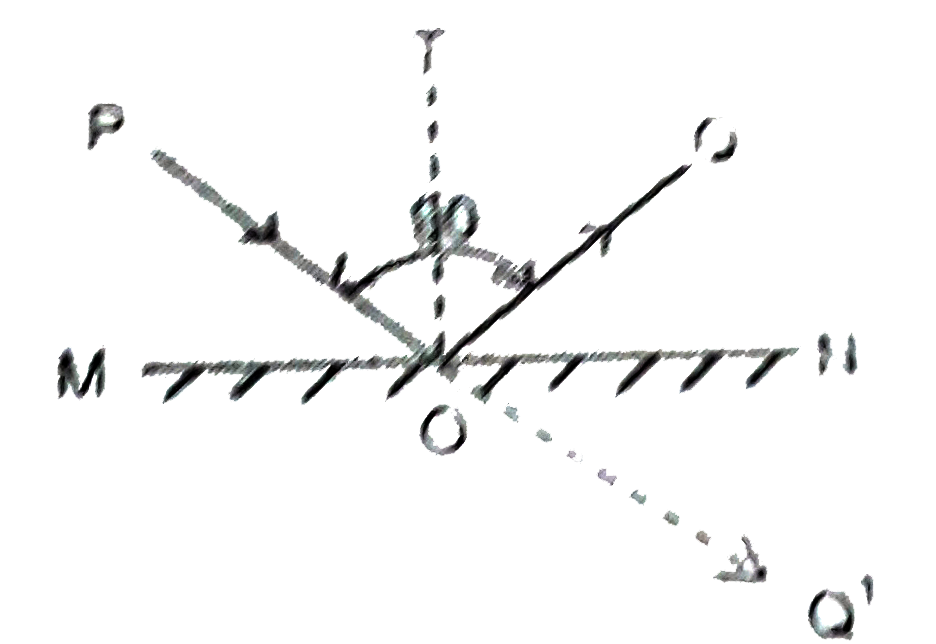 04:23View Solution
04:23View SolutionWhy does not an aeroplane or a bird cast a shadow when they are at greater heights?
02:06View SolutionWhy cannot a mirror whose surface is rough produce a clear image?
03:36View SolutionA clever student has used the concept of formation of shadow to determine the height of a long pole (OA). There was an electric bulb at the top of the vertical pole. The student placed an object of length 1 m at a height of 2 m from the ground as shown in the figure. The size of the shadow formed on the ground is 2 m. Determine the length of the pole.
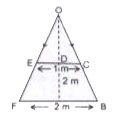 View Solution
View SolutionA pin hole camera of which 1 m is focussed to an object at a distance 30 m from it. If the height of the object is 3 m, what is the height of the image? ltbgt
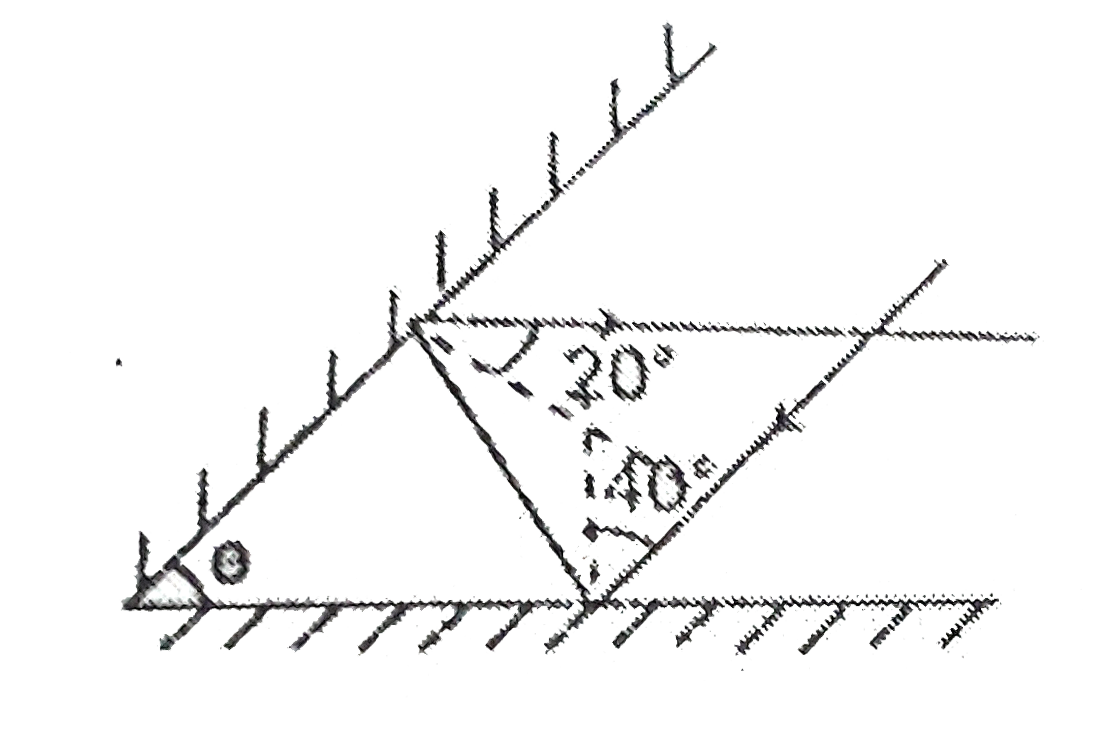 02:16View Solution
02:16View SolutionNumber of images formed by two inclined plane mirrors
44:28View SolutionRama watched in discovery channel that ini outer space, at greater heights above the surface of the Earth where atmosphere does not exist appears completely dark. Explain what would be the reason for this?
02:04View SolutionExpress 100 W in candlepower.
01:51View SolutionA physics teacher asked a student to find how much time does the light take to reach the earth if the distance between the sun and the earth is `150xx10^(6)km`? Teacher also gives an extra input that velocity of light is `3xx10^(8)ms^(-1)`. What would be the answer of the student?
02:16View SolutionWhy is a convex mirror used as a rear-view mirror in vehiciles? Eaxplain.
01:55View SolutionA physics student proved that, sunlight consists of different colour's and even gives two examples to supprot this. Explain.
02:37View SolutionExplain the formation of real and virtual images. Discuss what kind of images are formed in plane, convex and concave mirrors.
06:17View SolutionIn the head lights of a car, what kind of mirror are used? What is the use of mirror in the car head lights? Explain.
02:19View SolutionVishal wrote the word 'LIGHT' on a paper and placed it in front of a plane mirror (as shown in figure) and noticed how the letters of the word appear in the mirror. Write down what he noticed in the mirror.
 01:41View Solution
01:41View SolutionIn the figure, AB is an object and A'B' is the image formed when a spherical mirror is placed at point P. Identify the type of mirror and describe the nature of image. (Where F and C are focus and centre of curature of the mirror)
 03:09View Solution
03:09View SolutionA bus driver is observing the image of a car in his rear view (side) mirror. How does the size of the image change when the car approaches the bus?
04:10View SolutionWhen the physis teacher has given a task to determine the focal length of a concave mirror a clever boy in the class focussed the mirror to a distant object. He moved the screen in fornt of the mirror and caught a real image on a screen at a distance of 20 cm from the mirror and he determined the focal length. Where should the object be place so that the object and the image are formed at the same position?
02:51View SolutionTwo plane mirrors are inclined at an angle `theta` . A light ray incident on one of the mirrors undergoes multiple reflections. The angle of incidence on the first mirror is `15^@` . After reflection from the second mirror, if the light ray retraces its path, determine the value of `theta.`
 02:53View Solution
02:53View SolutionTwo identical mirrors are placed in a hollow cylindrical tube as show in the figure. A light ray incident on one of the mirrors undergoes multiple reflections. In the length of each mirror is 3 m, and the velocity of light is `3xx10^(8)ms^(-1)`, then find the time raken by the light ray incident on the mirror to come out of the bollow cylinder.
02:38View SolutionA student constructed a periscope by joining different periscopes P, Q, R, S and T as shown in the figure. Then,
(i) how many times does the incident light ray undergo reflection. (ii) when he observes the image of an object using only one periscope what kind of variation can be observed in the image, when compared with the image formed by the periscope shown in the figure?
 03:09View Solution
03:09View SolutionIn the figure, AB is an object and A'B' is the image formed when a spherical mirror is placed at point P. Identify the type of mirror and describe the nature of image. (Where F and C are focus and centre of curature of the mirror)
 03:09View Solution
03:09View SolutionA LASER source placed between two concave mirrors sends light rays as shown in the figure. If PQ and RS are parallel to the principal axis, determine the focal lengths and radius of curvatures of both the mirrors.
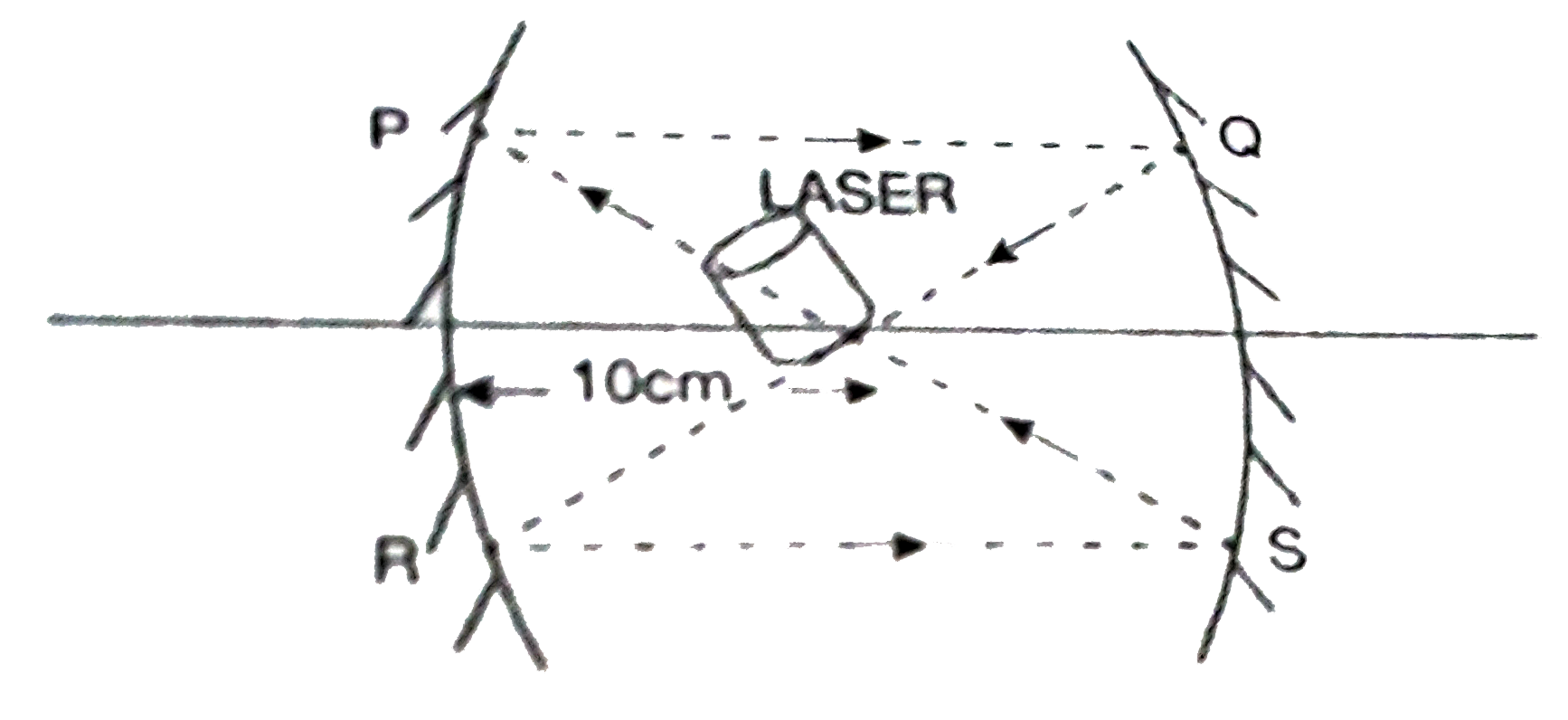 01:25View Solution
01:25View Solution
CONCEPT APPLICATION (LEVEL 2) questions and complete solutions for chapter LIGHT of PEARSON IIT JEE FOUNDATION of Class 7
All Exercises from PEARSON IIT JEE FOUNDATION Class 7 PHYSICS LIGHT
- ASSESSMENT TEST (TEST 1 (SELECT THE CORRECT ALTERNATIVE)
- ASSESSMENT TEST (TEST 2 (SELECT THE CORRECT ALTERNATIVE))
- CONCEPT APPLICATION (LEVEL 1 (FILL IN THE BLANKS))
- CONCEPT APPLICATION (LEVEL 1 (MATCH THE COLUMN))
- CONCEPT APPLICATION (LEVEL 1 (SELECT THE CORRECT ALTERNATIVE))
- CONCEPT APPLICATION (LEVEL 1 (TRUE OR FALSE))
- CONCEPT APPLICATION (LEVEL 2)
- EXAMPLE
- EXEMPLE
- Level 1
- Level 2
- Level 3
- LONG ANSWER TYPE QUESTIONS
- SHORT ANSWER TYPE QUESTIONS
- TEST 1
- TEST 2
- TEST YOUR CONCEPTS (LONG ANSWER TYPE QUESTIONS )
- TEST YOUR CONCEPTS (SHORT ANSWER TYPE QUESTIONS )
- TEST YOUR CONCEPTS (VERY SHORT ANSWER TYPE QUESTIONS (ANSWER THE QUESTIONS))
- TEST YOUR CONCEPTS (VERY SHORT ANSWER TYPE QUESTIONS (FILL IN THE BLANKS))
- TEST YOUR CONCEPTS (VERY SHORT ANSWER TYPE QUESTIONS (MATCH THE COLUMN))
- TEST YOUR CONCEPTS (VERY SHORT ANSWER TYPE QUESTIONS (SELECT THE CORRECT ALTERNATIVE))
- VERY SHORT ANSWER TYPE QUESTIONS
